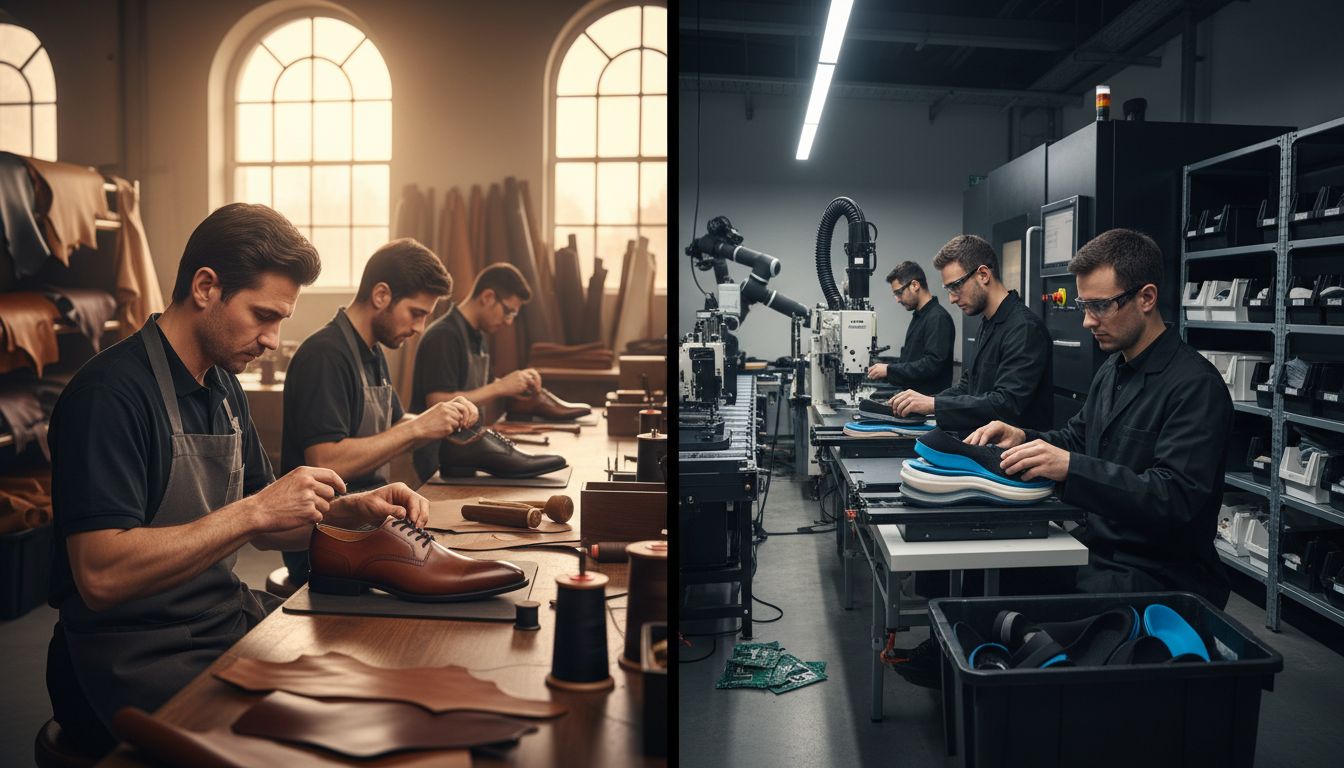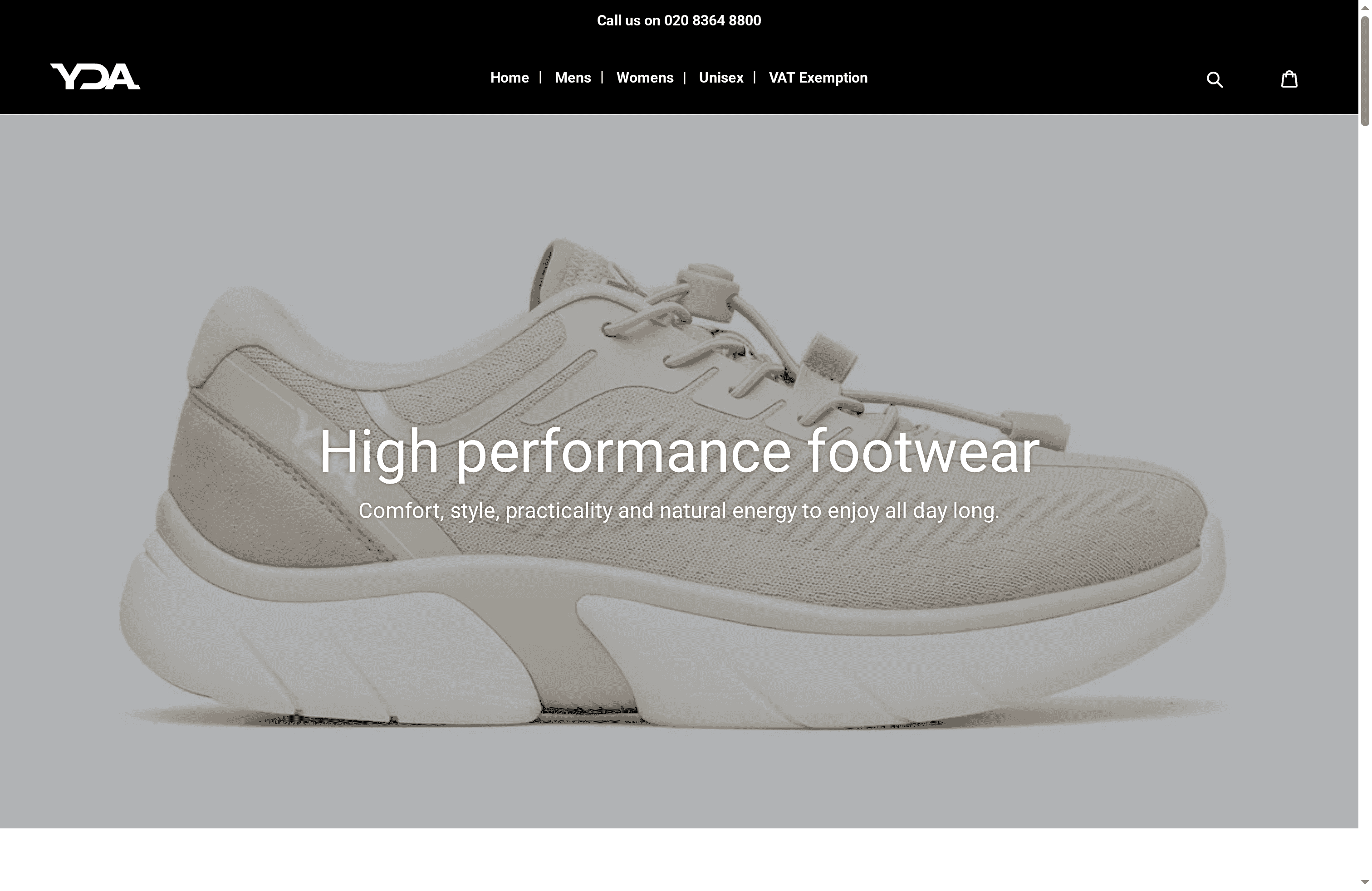Luxury vs Comfort Shoes: Everything You Need to Know
Did you know the average person walks over 100,000 miles in a lifetime? The shoes you choose can shape both your comfort and your confidence every single day. Whether you seek elegance or lasting support, finding the right balance between luxury and comfort is more than a style decision. This guide uncovers the facts that can change the way you select your next pair of shoes.
Table of Contents
- Defining Luxury And Comfort Shoes
- Types And Materials In Modern Footwear
- Design, Technology, And Key Benefits
- Choosing Shoes For Foot Health And Style
- Costs, Risks, And Common Buying Mistakes
Key Takeaways
| Point | Details |
|---|---|
| Understanding Shoe Categories | Luxury shoes emphasize aesthetics and superior materials, while comfort shoes focus on biomechanical support and wearability. |
| Material Selection Importance | Selecting appropriate materials is crucial for durability and performance, impacting both style and foot health. |
| Technological Advances | Modern shoe designs incorporate advanced materials and engineering, enhancing comfort and supporting individual movement patterns. |
| Informed Purchasing Decisions | Prioritize fit and material quality to avoid common buying mistakes, which can affect long-term comfort and foot health. |
Defining Luxury and Comfort Shoes
Understanding the nuanced differences between luxury shoes and comfort shoes can transform your footwear selection strategy. While these categories might seem similar, they serve distinctly different purposes and prioritise different design elements.
Luxury shoes, as defined by Britannica, are crafted from high-quality materials like premium calf leather, emphasising aesthetic appeal and durability. These shoes are typically designed to make a statement, showcasing exceptional craftsmanship and sophisticated design elements. The focus is often on visual elegance and using superior materials that not only look impressive but also demonstrate refined taste.
In contrast, comfort shoes prioritise biomechanical support and wearer experience. As Wikipedia notes, these shoes concentrate on features like advanced cushioning and ergonomic design to minimise foot strain. The primary objective is creating footwear that supports natural foot movement, reduces physical stress, and provides exceptional wearability throughout extended periods.
Key distinguishing characteristics include:

Here’s a comparison of luxury shoes and comfort shoes across essential criteria:
| Criteria | Luxury Shoes | Comfort Shoes |
|---|---|---|
| Main Priority | Visual sophistication Material quality |
Ergonomic support B iomechanical alignment |
| Typical Materials | Premium calf leather Exotic skins |
Breathable textiles Soft synthetics |
| Design Focus | Aesthetic appeal Craftsmanship |
Wearability Physical stress reduction |
| Target User Need | Statement style Refined appearance |
All-day comfort Foot health |
| Durability Emphasis | Longevity through materials | Long-term comfort Reduced fatigue |
-
Luxury Shoes Priorities:
- Premium material selection
- Aesthetic design
- Craftsmanship quality
- Visual sophistication
-
Comfort Shoes Priorities:
- Ergonomic support
- Biomechanical alignment
- Reduced physical strain
- Enhanced wearability
While luxury and comfort shoes might seem mutually exclusive, modern footwear design increasingly seeks to blend these attributes. Innovative manufacturers now understand that consumers desire shoes which not only look exceptional but also provide superior physical support and comfort.
Types and Materials in Modern Footwear
The world of footwear materials has dramatically evolved, transforming how we think about shoe construction and performance. Modern shoe design represents a sophisticated blend of functionality, comfort, and technological innovation.
According to Britannica, contemporary footwear utilises a diverse range of materials, each selected for specific performance characteristics. Natural materials like leather continue to provide unparalleled durability and flexibility, while textile components offer exceptional breathability. Synthetic materials such as polyurethane have introduced water-resistant and lightweight properties that dramatically expand shoe functionality.
Granulon highlights the expansive material spectrum in modern shoe manufacturing, ranging from traditional to cutting-edge options. The strategic selection of materials now goes far beyond aesthetic considerations, focusing on complex performance metrics like cushioning, weight distribution, and physiological support.
Material Categories in Modern Footwear:
-
Natural Materials:
- Full-grain leather
- Canvas
- Cotton
- Natural rubber
-
Synthetic Materials:
- Polyurethane
- EVA (Ethylene-Vinyl Acetate)
- Microfibre
- Advanced polymers
Today’s footwear design represents a remarkable convergence of engineering, material science, and user-centric innovation. Manufacturers now leverage advanced computational models and biomechanical research to create shoes that adapt to individual movement patterns, providing unprecedented levels of comfort and performance.

Design, Technology, and Key Benefits
Footwear design has transformed from simple protective coverings to sophisticated technological ecosystems that enhance human movement and performance. Modern shoe technology represents a remarkable convergence of biomechanical engineering, advanced materials science, and user-centric innovation.
The precision of shoe design is exemplified by the use of mechanical lasts, as highlighted by Wikipedia. These mechanical forms, precisely shaped like human feet, ensure optimal fit and comfort by meticulously replicating foot contours. This technological approach allows manufacturers to create shoes that aren’t just accessories, but personalised performance tools tailored to individual anatomical variations.
Specialised shoe designs demonstrate remarkable technological complexity. Wikipedia reveals how advanced designs like climbing shoes incorporate multi-piece patterns and specialized rubber compounds, showcasing how targeted engineering can dramatically enhance functional performance. These innovations go beyond aesthetic considerations, focusing on creating shoes that actively support and improve human movement.
Key Technological Benefits in Modern Footwear:
- Biomechanical alignment support
- Enhanced energy return
- Adaptive cushioning systems
- Precision ergonomic mapping
- Advanced moisture management
- Lightweight performance materials
The future of footwear technology lies in creating intelligent, responsive designs that adapt to individual movement patterns. By integrating computational modeling, biomechanical research, and cutting-edge materials, shoe manufacturers are transforming footwear from passive accessories into dynamic performance enhancement tools that support and optimize human physical potential.
Choosing Shoes for Foot Health and Style
Selecting the perfect pair of shoes involves a delicate balance between personal style, foot anatomy, and functional performance. The right footwear can dramatically impact not just your appearance, but your overall physical well-being and daily comfort.
Wikipedia highlights that shoe selection goes far beyond mere aesthetic considerations, emphasizing the critical relationship between style and foot health. Ergonomic design and biomechanical support are now fundamental criteria when choosing footwear, transforming shoes from simple fashion statements into sophisticated personal health tools.
Specialised shoe selection requires nuanced understanding, as demonstrated by Wikipedia’s insights into performance footwear. Different activities demand specific design characteristics, making one-size-fits-all approaches obsolete. Factors like arch support, cushioning, material flexibility, and weight distribution become paramount in ensuring both style and physiological comfort.
Critical Shoe Selection Criteria:
- Precise foot measurement
- Arch type assessment
- Activity-specific design requirements
- Material breathability
- Cushioning and shock absorption
- Biomechanical alignment support
Modern footwear technology enables unprecedented personalisation. By understanding your unique foot anatomy, movement patterns, and lifestyle needs, you can select shoes that not only look remarkable but actively contribute to your physical health and performance. Consider exploring our YDA MAC 3 Leather Shoe Kevin for a perfect blend of style and ergonomic design.
Costs, Risks, and Common Buying Mistakes
Purchasing shoes is far more complex than simply selecting an attractive design. The financial investment and potential long-term impacts on foot health demand a strategic, informed approach to footwear selection.
Wikipedia reveals that one of the most prevalent buying mistakes involves overlooking proper fit and material quality. This seemingly minor oversight can lead to significant consequences, including reduced shoe durability, potential foot discomfort, and unnecessary additional expenses in replacing poorly chosen footwear.
Specialty materials like patent leather demonstrate the nuanced considerations in shoe purchasing. As Wikipedia notes, while patent leather offers an attractive glossy appearance and water resistance, it requires meticulous maintenance and is susceptible to scuffing. Such insights underscore the importance of understanding material characteristics beyond initial aesthetic appeal.
Common Shoe Purchasing Risks:
- Incorrect size selection
- Neglecting foot arch type
- Ignoring material maintenance requirements
- Prioritising style over comfort
- Underestimating long-term wear impact
- Failing to consider activity-specific needs
Financial prudence in shoe shopping means viewing your purchase as an investment in personal comfort and health. By carefully evaluating material quality, fit, intended use, and maintenance requirements, you can make informed decisions that balance aesthetic preferences with practical functionality. Our YDA MAC 3 Leather Shoe Kevin represents a prime example of thoughtful design that addresses multiple critical purchasing considerations.
Discover the Perfect Balance Between Luxury and Comfort in Your Footwear
Choosing between luxury and comfort shoes can feel like a difficult decision when your feet deserve both style and support. The article highlights how prioritising visual sophistication without ergonomic care or seeking comfort without considering craftsmanship can leave you with shoes that fail your daily needs. Key challenges include finding footwear that offers biomechanical alignment, premium materials, and all-day wearability without compromise.
At YDA UK, we understand these pain points and offer a solution designed for those who want fashionable, high-performance shoes without sacrificing foot health. Explore our extensive range in the Shoes – YDA UK collection where technology meets style. Each pair is crafted to deliver ergonomic support, advanced cushioning, and stunning design that enhances your confidence and well-being simultaneously.

Why settle for less when you can enjoy the best of both worlds with YDA footwear? Browse our Womens – YDA UK selection or visit our Home page – YDA UK now to find your next pair of luxurious yet comfortable shoes. Take the first step towards effortlessly combining style with comfort today at https://ydauk.com. Your feet will thank you.
Frequently Asked Questions
What are the main differences between luxury shoes and comfort shoes?
Luxury shoes emphasize visual sophistication, premium materials, and craftsmanship, while comfort shoes prioritize ergonomic support and biomechanical alignment for all-day wear.
What materials are typically used in luxury shoes compared to comfort shoes?
Luxury shoes often use high-quality materials like premium calf leather and exotic skins, whereas comfort shoes are made from breathable textiles and soft synthetics designed for flexibility and comfort.
How can I ensure the shoes I choose support my foot health?
To support foot health, consider your foot measurements, arch type, activity-specific requirements, and look for shoes with good cushioning, breathability, and biomechanical alignment support.
What common mistakes should I avoid when buying shoes?
Common mistakes include selecting the wrong size, neglecting to consider foot arch type, ignoring material maintenance needs, prioritizing style over comfort, and underestimating the long-term effects of wear.
